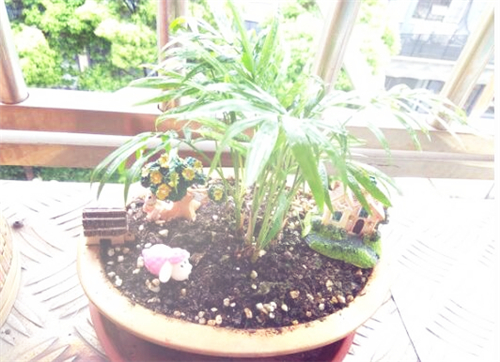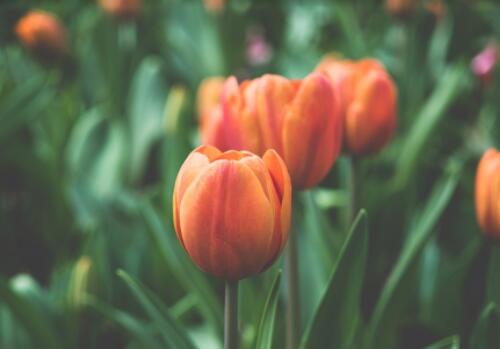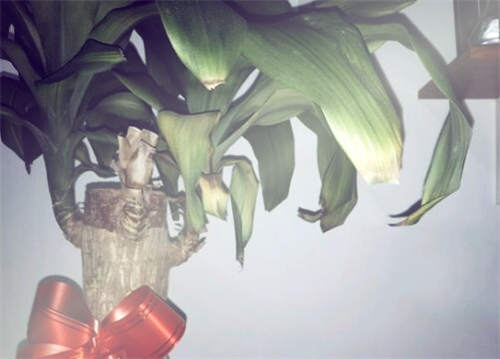Is the evergreen shrub pocket coconut poisonous? Will it blossom? When does it open? What's the moral? How can you keep it open?
Pocket coconut, also known as beautiful bamboo coconut, pocket coconut sunflower, dwarf brown, dwarf coconut, living room brown, pocket brown, is an evergreen shrub native to Mexico and Guatemala. It is called pocket coconut because it looks like a coconut tree. many people like to put it indoors to improve the effect of decoration, is that pocket coconut poisonous? Will it blossom? When does it open? What's the moral? How can you keep it open?

Is it poisonous?
Pocket coconut itself is cultivated as an indoor plant, so it is absolutely safe, non-toxic, and will not produce toxic substances, so you can rest assured to plant it in the room.
Flowering time:
Pocket coconuts usually bloom from February to March, but it is difficult for pocket coconuts to blossom or not to bloom due to the influence of climate and environment. In general, potted plants basically do not blossom, but by taking good care of them and giving them enough nutrients, so that the pocket coconut can accumulate certain nutrients, it will grow flower buds and blossom, but the flowering process is slow.
The moral of flowering:
Pocket coconut symbolizes vitality, eternal happiness, its flowering is very rare, the general breeding environment can not meet the requirements of flowering, so pocket coconut flowering represents flowering wealth, there are dignitaries coming, indicating that something good is about to happen.
Culture skills:
1. Potted soil: pocket coconut potted plants can generally be cultivated with rotten leaf soil, peat soil, 1 + 4 river sand and a small amount of base fertilizer as the substrate. It is best to plant in a loose and fertile loam with good drainage.
2. Watering: watering is based on the principle that it is better to be wet than dry, and the basin soil can always be kept moist. When the air is dry in summer and autumn, we should often spray water to the plants to improve the air humidity of the environment, which is beneficial to its growth, while keeping the leaves dark green and shiny, and appropriately reduce the amount of water in winter to facilitate overwintering.
3. Fertilization: pocket coconuts do not have high requirements for fertilizer. In general, liquid fertilizer is applied once or twice a month in the growing season, with little or no fertilization in late autumn and winter. The basin is changed in spring every 2-3 years.
4. Temperature: the suitable temperature for growth is 15: 30 ℃, among which it is 19: 30 ℃ from May to September and 13: 16 ℃ from October to April of the following year. When the temperature is above 35 ℃ in summer, the temperature should be shaded properly or taken measures such as water spraying and ventilation. The ambient temperature should be maintained at no less than 5 ℃ in winter, otherwise the long-term temperature below 5 ℃ will be easy to freeze and fall leaves.
5, place: pocket coconut has a great tolerance to light, but it is best in the half shade of 50% sunshine.
6. Disease: pocket coconut is prone to social brown spot under high temperature and high humidity. If brown spot is found, 800-1000-fold topiramate or chlorothalonil should be used to control the disease. Scale insects are also easy to occur when the air is dry and poorly ventilated. if it is found that scale insects can be scraped manually, they can also be sprayed with 800 to 1000 times omethoate.
Time: 2019-04-09 Click:
- Prev

Who can I give tulips to? Can I put it indoors? Is it poisonous? How do you plant seeds?
Tulip, also known as lotus, grass musk, tulip, Dutch flower, florescence from April to May. It is the national flower of Turkey, the Netherlands, Hungary and other countries. So who can I give tulips to? Can I put it indoors? Is it poisonous? How do you plant seeds? I know from the data of Liliaceae.
- Next

Does the evergreen tree blossom? When will it blossom? What's the sign? How can it blossom?
Brazilian wood, also known as Brazilian iron tree, Brazilian millennium tree, fragrant dragon blood tree, is a common evergreen tree in the tropics, which is widely cultivated and indoors because of its high ornamental value. When will it blossom? What's the sign? How can it blossom? Flowering time: Brazilian wood blossoms
Related
- Fuxing push coffee new agricultural production and marketing class: lack of small-scale processing plants
- Jujube rice field leisure farm deep ploughing Yilan for five years to create a space for organic food and play
- Nongyu Farm-A trial of organic papaya for brave women with advanced technology
- Four points for attention in the prevention and control of diseases and insect pests of edible fungi
- How to add nutrient solution to Edible Fungi
- Is there any good way to control edible fungus mites?
- Open Inoculation Technology of Edible Fungi
- Is there any clever way to use fertilizer for edible fungus in winter?
- What agents are used to kill the pathogens of edible fungi in the mushroom shed?
- Rapid drying of Edible Fungi

